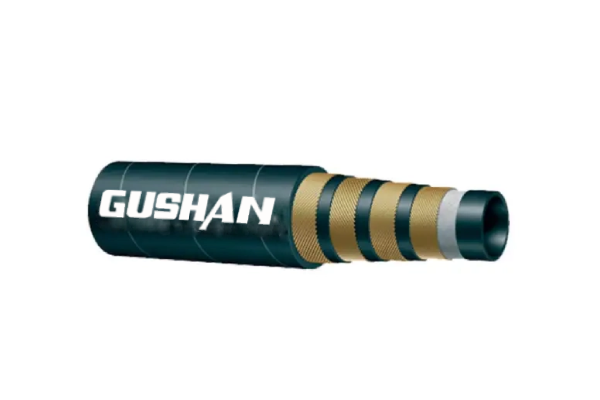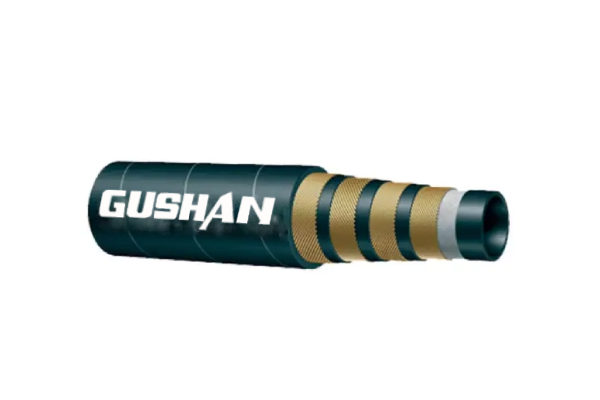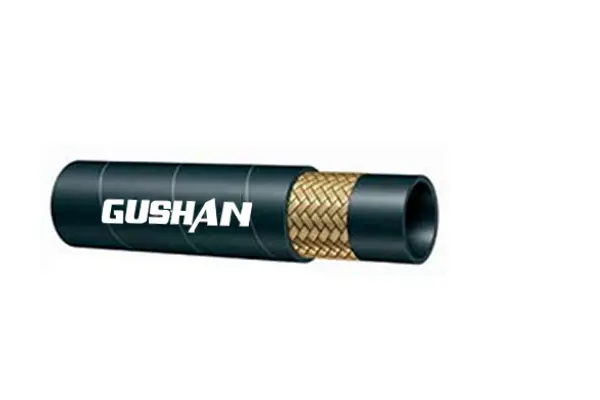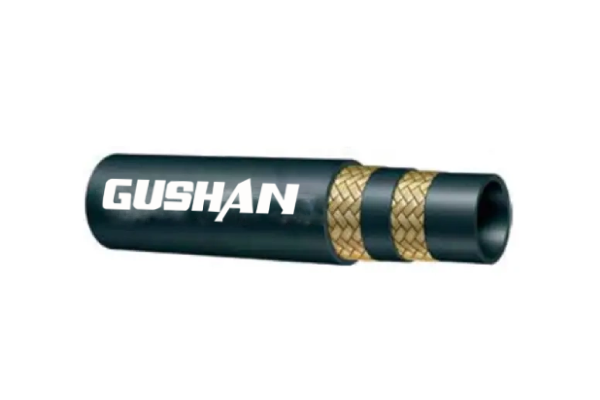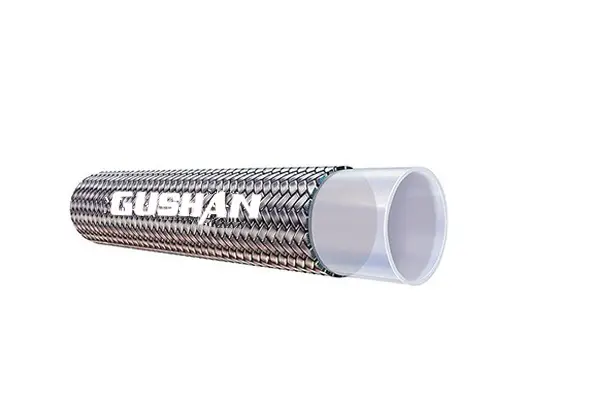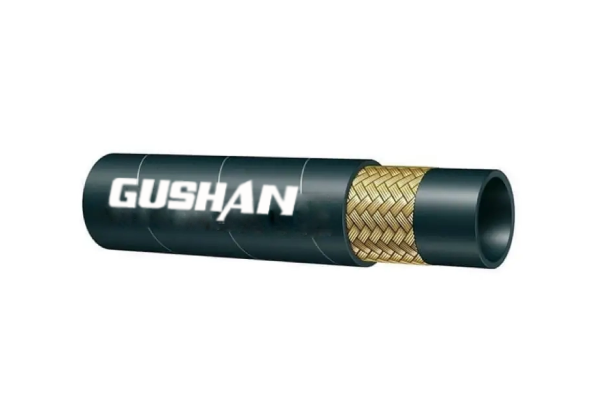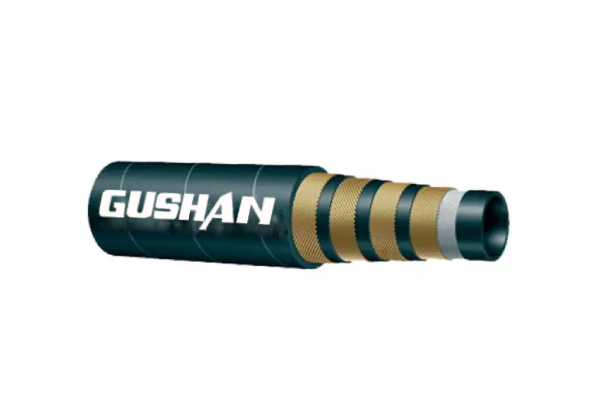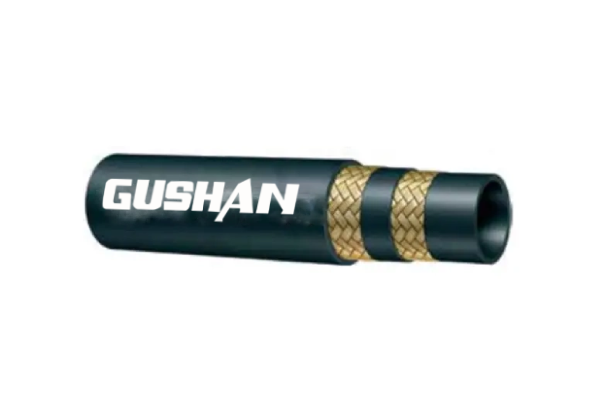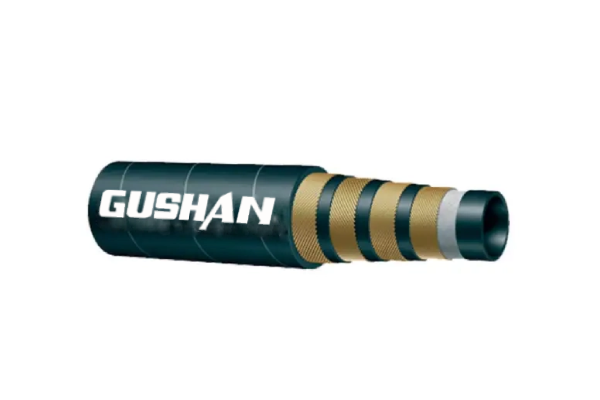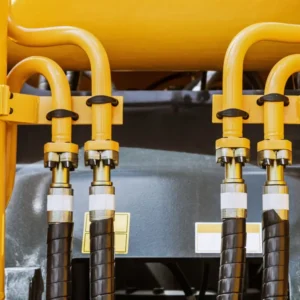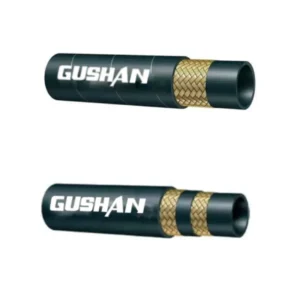Hydraulic systems rely on hoses to transfer fluid, but not all hoses are created equal. High-pressure and low-pressure hydraulic hoses serve distinct purposes, each designed to handle specific operating conditions. Understanding their differences is crucial for ensuring system efficiency and safety.
This blog post will delve into the key distinctions between high-pressure and low-pressure hydraulic hoses. We’ll explore their construction, pressure ratings, applications, and the factors that influence their selection, providing valuable insights for choosing the right hose for your hydraulic needs.
What Is High Pressure Hydraulic Hose
Recommended High Pressure Hydraulic Hoses
-
DIN EN856 4SH
-
DIN EN856 4SP
-
DIN EN857 1SC
-
DIN EN857 2SC
-
SAE 100 R14
-
SAE 100R 1A / DIN EN853 1ST
-
SAE 100R12
-
SAE 100R 2A / DIN EN853 2ST
-
SAE 100R13
High-pressure hydraulic hoses are specifically engineered to withstand and transport fluids under extreme pressure conditions. They are integral components in hydraulic systems that power heavy machinery and industrial equipment, where significant force is required to perform tasks. These hoses typically feature multiple layers of reinforcement, such as steel wire braiding or spiraling, to maintain structural integrity and prevent bursting under intense pressure.
These hoses are designed for demanding applications like construction, mining, and heavy manufacturing, where hydraulic systems operate at pressures ranging from several thousand to tens of thousands of pounds per square inch (PSI). The robust construction of high-pressure hoses ensures reliable fluid transfer and minimizes the risk of leaks or ruptures, which could lead to equipment downtime, safety hazards, and environmental contamination.
High-Pressure Hydraulic Hose Examples
High-pressure hydraulic hoses are the lifeblood of numerous heavy-duty systems, channeling immense force to power everything from construction equipment to industrial machinery. Designed to withstand extreme pressures, these hoses are built with robust materials and intricate reinforcement structures. Understanding the different types and standards is crucial for selecting the right hose for your application.
Here are some high pressure hydraulic hose examples:
SAE 100R1:
- A single wire braid reinforced hydraulic hose.
- Suitable for medium to high-pressure applications.
- Commonly used in general hydraulic systems.
- A double wire braid reinforced hydraulic hose.
- Designed for high-pressure applications.
- Used in heavy machinery and demanding hydraulic systems.
- Four spiral wire reinforced hydraulic hose.
- For very high-pressure applications.
- Used in severe hydraulic systems.
- Multi spiral wire reinforced hydraulic hose.
- For extreme high-pressure applications.
- Used in the most demanding hydraulic systems.
- Multi spiral wire reinforced hydraulic hose.
- For the highest pressure applications.
- Used in the most demanding hydraulic systems.
- Single wire braid reinforced hydraulic hose.
- Corresponds to SAE 100R1.
- Common in European hydraulic systems.
- Double wire braid reinforced hydraulic hose.
- Corresponds to SAE 100R2.
- High-pressure applications in European systems.
- Four spiral wire reinforced hydraulic hose.
- For very high pressure applications.
- Common in European high pressure systems.
- Four spiral wire reinforced hydraulic hose.
- For extreme high pressure applications.
- Common in European extreme high pressure systems.
These are just a few examples, and there are many other variations and specialized high-pressure hydraulic hoses available. Always consult manufacturer specifications and industry standards for the correct hose selection.
What Is Low Pressure Hydraulic Hose

Low-pressure hydraulic hoses are designed for applications where fluid is transferred at relatively low pressures. These hoses are typically more flexible and lightweight compared to their high-pressure counterparts, making them suitable for situations requiring maneuverability and ease of installation. They are commonly used in systems where the pressure demands are not extreme, such as certain types of air tools, fluid transfer lines, and some agricultural equipment.
The construction of low-pressure hydraulic hoses often involves fewer layers of reinforcement, resulting in a more pliable hose. Materials used can vary, including rubber, PVC, or thermoplastic, depending on the specific application and fluid compatibility requirements. While they are not designed for high-stress environments, they still play a vital role in various fluid transfer systems, providing reliable performance within their specified pressure ranges.
Low Pressure Hydraulic Hose Examples
Low-pressure hydraulic hoses are essential for fluid transfer in various applications where high pressures aren’t required. These hoses prioritize flexibility and ease of use, making them ideal for systems that require frequent movement or tight bends.
Understanding their diverse types and applications can help you choose the right hose for your specific needs. Here are some examples:
PVC Hoses:
- Commonly used for air and water transfer.
- Highly flexible and lightweight.
- Suitable for low-pressure applications in various industries.
Rubber Air Hoses:
- Designed for pneumatic tools and air compressors.
- Durable and flexible, even in cold temperatures.
- Used in garages, workshops, and construction sites.
Fuel Hoses:
- Specifically designed for transferring fuel and oil.
- Resistant to chemicals and hydrocarbons.
- Used in automotive, marine, and agricultural applications.
Garden Hoses:
- Used for watering plants and general outdoor use.
- Flexible and easy to handle.
- Made from various materials, including rubber and vinyl.
Thermoplastic Hoses:
- Used in low pressure hydraulic and pneumatic systems.
- Good chemical resistance.
- Used in many industrial applications.
High Pressure Hydraulic Hose vs Low Pressure
Hydraulic systems rely on the controlled transfer of fluid to generate power. The hoses facilitating this transfer are not created equal; they are specifically designed to handle either high or low pressures, each with distinct characteristics and applications. Understanding the differences between high-pressure and low-pressure hydraulic hoses is crucial for ensuring system efficiency, safety, and longevity.
High-Pressure Hydraulic Hoses:
These hoses are engineered to withstand extreme pressures, often exceeding several thousand PSI. They are typically constructed with multiple layers of reinforcement, such as steel wire braiding or spiraling, to provide the necessary strength and durability. This robust construction allows them to operate in demanding applications, including heavy machinery, construction equipment, and industrial hydraulic systems.
High-pressure hoses are designed to handle significant stress, both internal and external. They are less flexible than low-pressure hoses due to their reinforced construction. They are often used in scenarios involving:
- Heavy lifting and material handling.
- High-force actuation in machinery.
- Systems with frequent pressure surges.
- Environments with potential for abrasion or impact.
The materials used in high-pressure hoses are selected for their strength, resistance to pressure, and durability. These hoses are typically more rigid, requiring careful routing and installation to prevent kinking or damage.
Low-Pressure Hydraulic Hoses:
These hoses are designed for applications where fluid is transferred at relatively low pressures, typically below a few hundred PSI. They are characterized by their flexibility, lightweight construction, and ease of handling. They are commonly used in applications such as:
- Air tools and pneumatic systems.
- Fluid transfer in agricultural equipment.
- Coolant and lubrication lines.
- Low-pressure fluid conveyance in manufacturing.
The construction of low-pressure hoses often involves fewer layers of reinforcement, or none at all. The materials used can vary, including rubber, PVC, or thermoplastic, depending on the fluid being transferred and the operating environment. They offer superior flexibility, making them suitable for systems requiring tight bends or frequent movement.
Low-pressure hoses are more susceptible to damage from high pressure, abrasion, and harsh environmental conditions. They are also less resistant to pressure surges and spikes. Selecting the appropriate hose for the operating pressure is crucial for preventing failures and ensuring safety.
Key Differences between high pressure hydraulic hoses and low pressure hydraulic hoses:
| Feature | High-Pressure Hydraulic Hose | Low-Pressure Hydraulic Hose |
| Pressure Capacity | Thousands of PSI (typically 2,000+ PSI) | Hundreds of PSI (typically below 500 PSI) |
| Construction | Multiple layers of reinforcement (steel wire braid or spiral), robust materials | Fewer or no reinforcement layers, more flexible materials (rubber, PVC, thermoplastic) |
| Flexibility | Less flexible, more rigid | Highly flexible, more pliable |
| Durability | High durability, resistant to high pressures and demanding conditions | Lower durability, less resistant to high pressures, abrasion, and harsh environments |
| Applications | Heavy machinery, construction equipment, industrial hydraulics, high-force actuation | Air tools, fluid transfer in agriculture, coolant and lubrication lines, low-pressure fluid conveyance |
| Cost | Typically higher due to robust construction and materials | Typically lower due to simpler construction and materials |
| Reinforcement | Multiple layers of braided or spiraled steel wire | Often fabric braiding, or none at all. |
| Wall Thickness | Thicker walls to contain higher pressures | Thinner walls for increased flexibility |
| Weight | Heavier | Lighter |
How to Choose High Pressure Hydraulic Hose and Low Pressure
Choosing the right hydraulic hose, whether high or low pressure, is crucial for system safety and efficiency. Start by accurately determining the system’s operating pressure.
For high-pressure applications, select a hose with a maximum working pressure (MWP) that exceeds the system’s peak pressure, incorporating a safety factor. For low-pressure systems, ensure the hose’s pressure rating accommodates the maximum pressure encountered, even during surges. Consider the fluid type, temperature range, and environmental conditions to ensure compatibility and longevity.
Next, evaluate the hose’s construction and materials. High-pressure hoses typically feature multiple layers of steel wire reinforcement, while low-pressure hoses may utilize fabric braiding or thermoplastic materials. Consider factors like:
- Reinforcement type: Wire braid, spiral wire, or fabric.
- Hose material: Rubber, thermoplastic, or PVC.
- Abrasion resistance: Essential for harsh environments.
- Chemical compatibility: Ensuring the hose can withstand the fluid being conveyed.
Finally, consider the hose’s size, bend radius, and end connections. The hose’s inner diameter should be sufficient to maintain fluid flow without excessive pressure drop. The bend radius must accommodate the system’s layout to prevent kinking. End connections should match the system’s fittings and provide a secure, leak-free seal. Key considerations include:
- Hose inner diameter (ID): Ensuring adequate flow.
- Bend radius: Preventing kinking and damage.
- End connection type: Matching system fittings.
- Installation ease: Considering accessibility and routing.
Conclusion
Understanding the distinctions between high-pressure and low-pressure hydraulic hoses is crucial for optimizing system performance and safety. High-pressure hoses, designed for demanding applications, feature robust construction to handle extreme forces, while low-pressure hoses cater to lighter-duty tasks with greater flexibility. Choosing the correct hose ensures efficiency and prevents costly failures.
Selecting the appropriate hose depends heavily on the specific application’s pressure requirements, fluid type, and environmental conditions. Over-specifying can lead to unnecessary costs, while under-specifying poses significant safety risks. Proper matching of hose to application is paramount.
For a comprehensive range of reliable hydraulic hoses, including both high and low-pressure options, explore Gushan Rubber’s wholesale offerings. Contact us today to secure quality products tailored to your needs.

